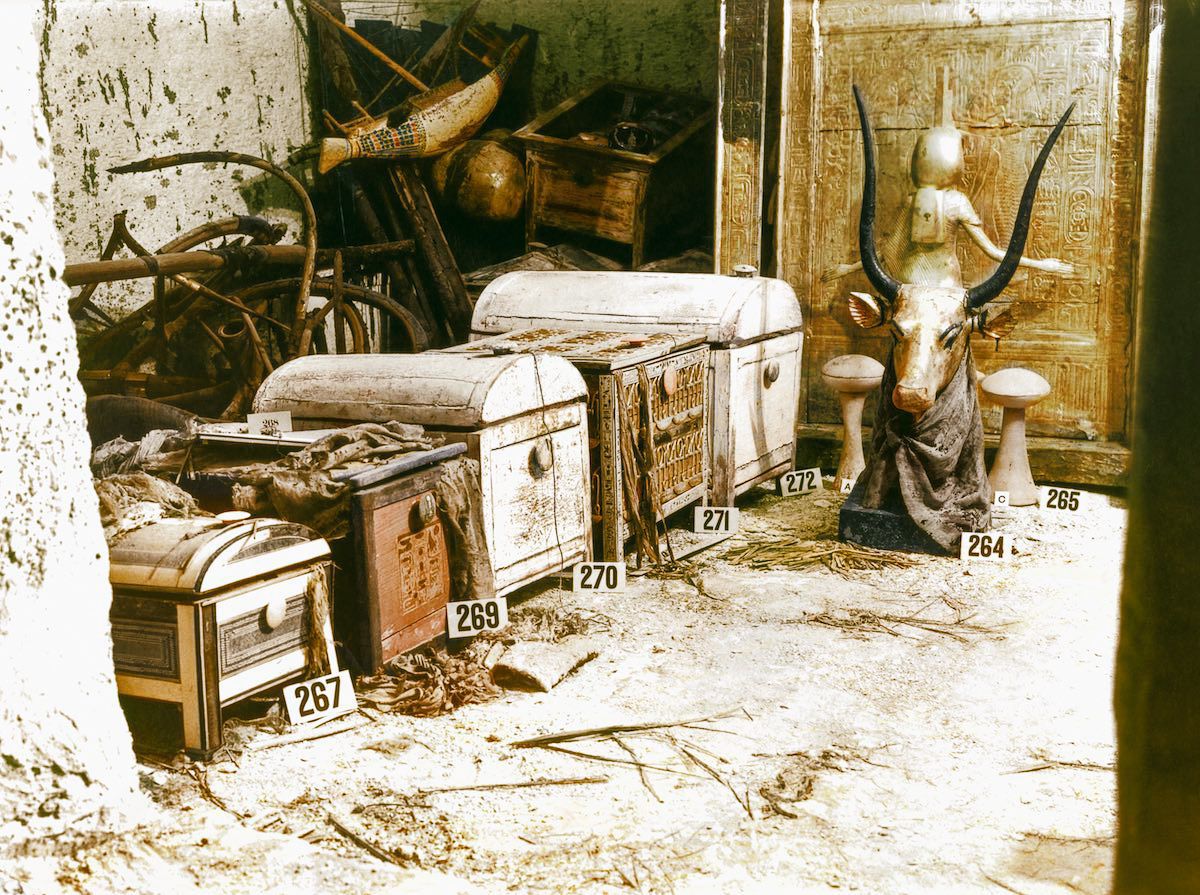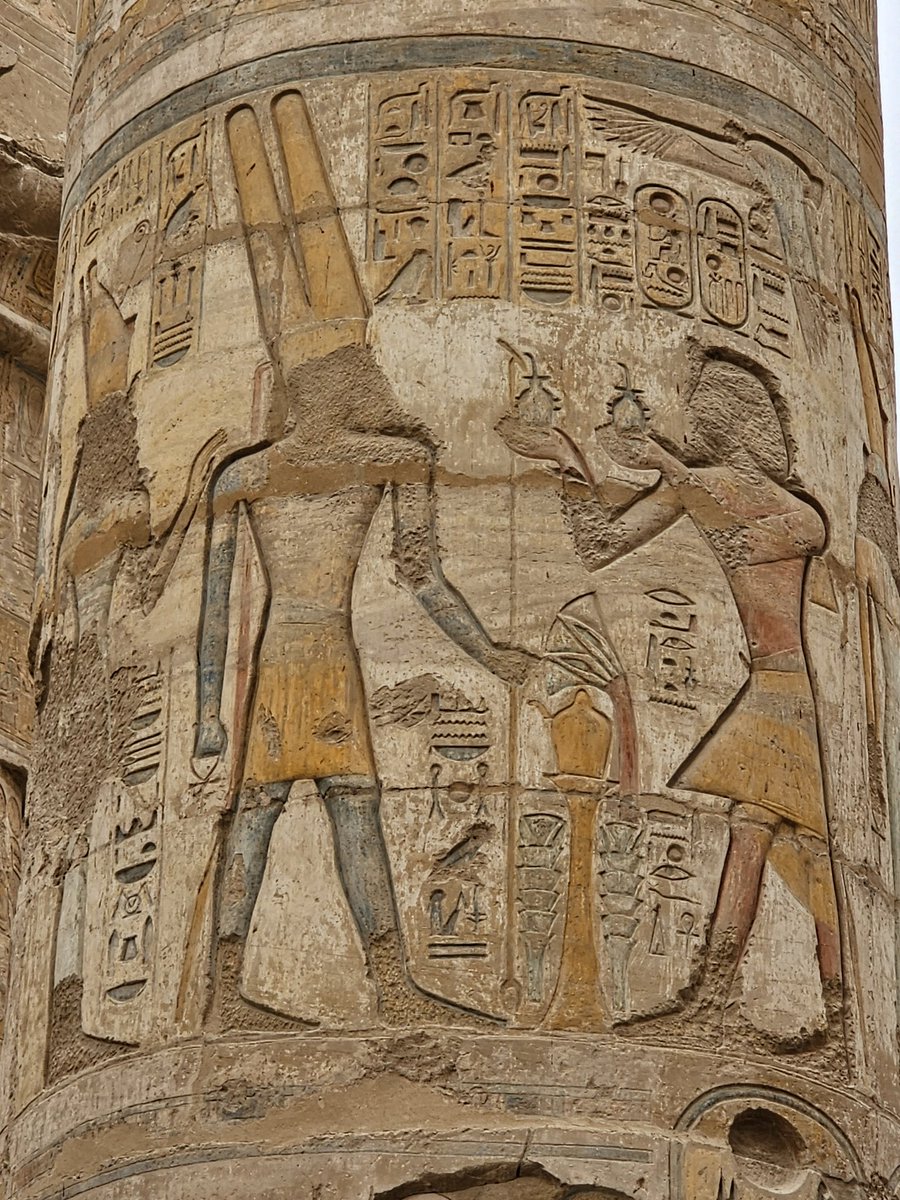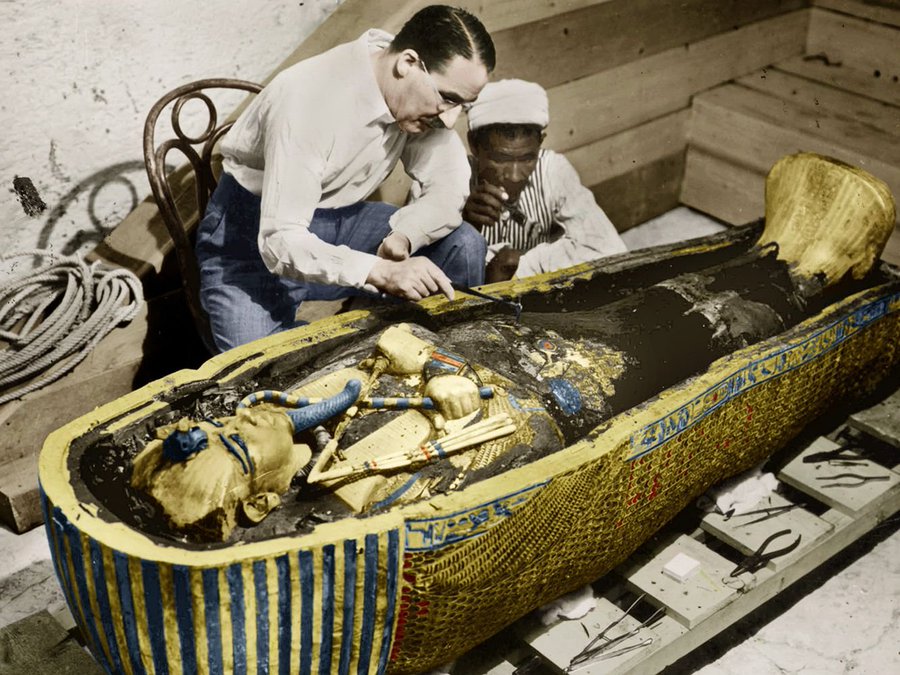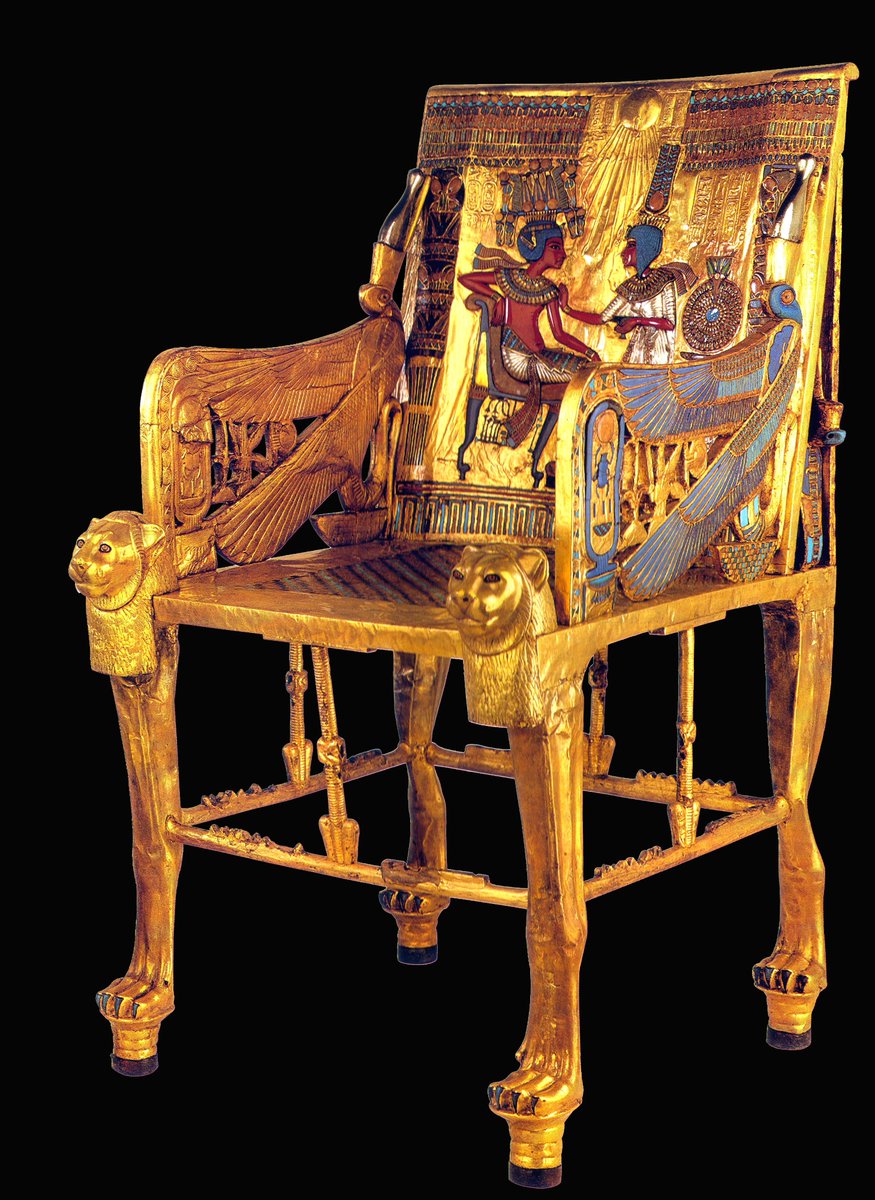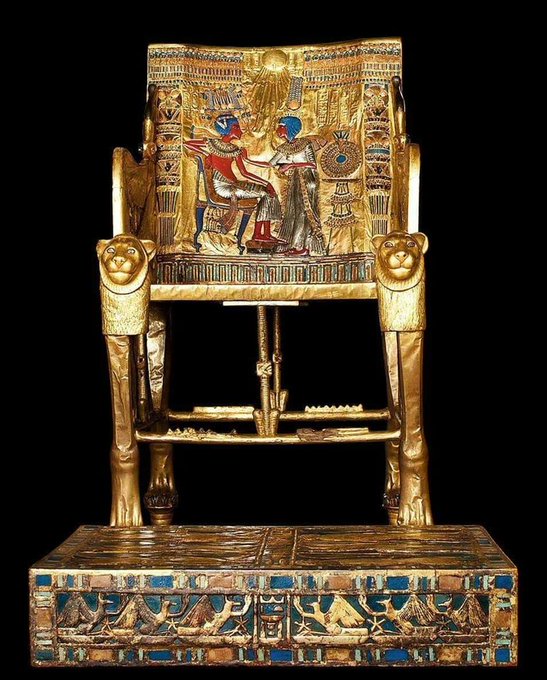1/ It's day T-93 of Tutankhamun 100 day countdown celebrating 100 years since discovery of his tomb. Today its Box Day! #Tutankhamen #Toutankhamon #Tutancâmon #Tutanchamun #Tut #Tut100 #Tutankamón #ツタンカーメン #图坦卡蒙 #圖坦卡蒙 #Τουταγχαμών #тутанхамон #투탕카 توت عنخ آمون# 

2/ Not Boxing day (Dec 26) for those in UK & Canada, but boxes, chests, & caskets from Tutankhamun's tomb. Egyptians didn't have wardrobes & dressers. Elite stored their stuff in boxes. Carter found dozens of wood boxes in the tomb from plain to lavish. 


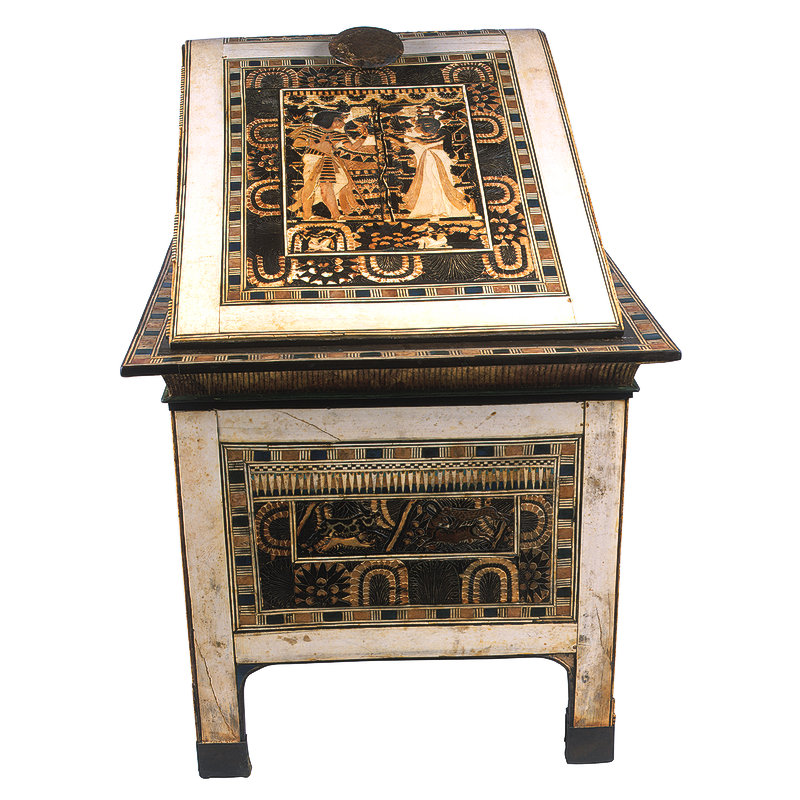
3/ Chests made from local woods like sycamore & exotic imports like cedar of Lebanon & ebony. Veneers of ebony, ivory, etc & gold leaf also applied to Tutankhamun's boxes #Egypt #Egypte #Egipto #Egito Αίγυπτος #Ägypten מִצְרַיִם# مصر# #Egitto #エジプト #이집트 #Египет #Єгипет 

4/ Boxes stored clothing, jewelry, & personal effects. Chests left on floor or stacked on furniture in the tomb. 

6/ quality of boxes varied from utilitarian to sumptuous. This chest made of plain wood painted black & white to resemble ebony & ivory #Tutankhamun #Egypt #Archaeology #furniture #art #Ancient #History #AncientEgypt 

7/ Another wood box covered in fine inlays, called marquetry, has 100s of fine slivers of ivory & ebony arranged in herringbone patterns & tiny squares in chess board & diamond patterns with larger ebony & ivory veneers. #furniture #carpentry #marquetry 



8/ Most boxes have short legs. Some are "shrine shaped" with a cavetto cornice on top of box & hump-shaped lid like this box. Compare roof of Tut's gold shrine 



9/ Same shrine roof shape on this gilded chest with blue glass inlays. It has Tutankhamun's cartouches mixed with cobras on the sides & his Horus name on the lid. 


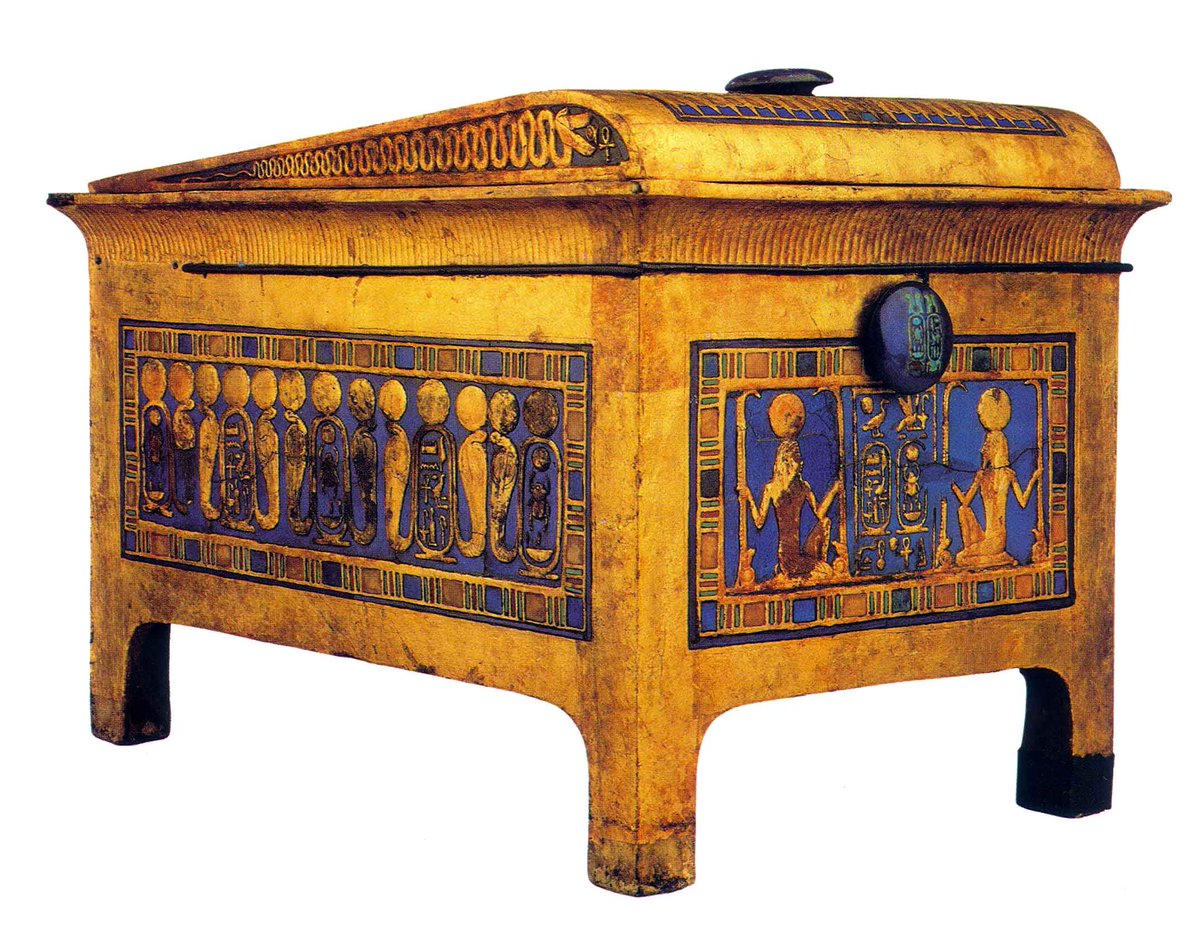
10/ more views of gilded chest. Front end has two figures of Heh, god of Eternity & Tutankhamun's names. Glazed knob in dark blue with light blue cartouches imitates lapis lazuli & turquoise. Knob on top of box for opening, A string connected 2 knobs to seal box 



11/ Several of Tutankhamun's boxes sit on tall legs for convenient access while standing or sitting in a chair. Made from cedar with ebony veneers & gilded details. friezes of hieroglyphs like ankh "life" & others meaning "stability" or "dominion" as fretwork between legs 

12/ wooden surfaces often painted with hieroglyphic texts of Tutankhamun's royal names & titles, often in striking complementary color. Here, yellow paint used against ebony veneer 

13/ This jewel casket with ivory & ebony marquetry has black hieroglyphs against ivory panels & on ivory knobs. 

14/ A closeup of Tutankhamun's names on this box #Egypt #Egypte #Egipto #Egito Αίγυπτος #Ägypten מִצְרַיִם# مصر# #Egitto #エジプト #이집트 #Египет #Єгипет 

16/ Some boxes were unusual shapes, like this half circular example of cedar & ebony. Note the bronze carrying rings on the upper side. It has ilded studs on lid, ebony knobs. On front, 3 gilded cartouches of Tutankhamun & Queen Ankhesenamun sit on Unification of Two Lands symbol 

18/ This is a small ivory jewelry box with internal compartments. His names are carved on the front & lid in relief & it has gilded bronze knobs & hinges. The remains of twine used to seal the box is visible on top. A scribe wrote an ink text in the cursive hieratic script. 



20/ A better preserved box made from papyrus reeds contained Tutankhamun's writing supplies. The scene painted on its front shows the king receiving jubilees from Ptah & Sakhmet, the gods of Memphis. More on Tut's writing kit another day 

21/ Here is an excavation photo of the papyrus box stacked with other objects in a larger wooden casket. You can see the larger box was divided into compartments. 

22/ We will look at some even more spectacular boxes & chests another day, including the famous painted casket with battle & hunting scenes & the cartouche shaped jewelery box 



23/ One last item for today is the small chest made from calcite (Egyptian alabaster). It has the classic barrel lid & is decorated with geometric patterns & hieroglyphs in black & red paint. The pointed shapes represent rows of lotus flower petals 



24/ The lid has painted images of two complex flower bouquets with Tutankhamun's names & titles between 

25/ Join me tomorrow for a look at Tutankhamun's lamps & lighting kit including this amazing calcite lamp-vase. #Tutankhamen #Egypt #Archaeology #Ancient #Toutankhamon #Tutancâmon #Tutanchamun #Tutankamón #ツタンカーメン #图坦卡蒙 #圖坦卡蒙 #Τουταγχαμών #투탕카 توت عنخ آمون# 

• • •
Missing some Tweet in this thread? You can try to
force a refresh

